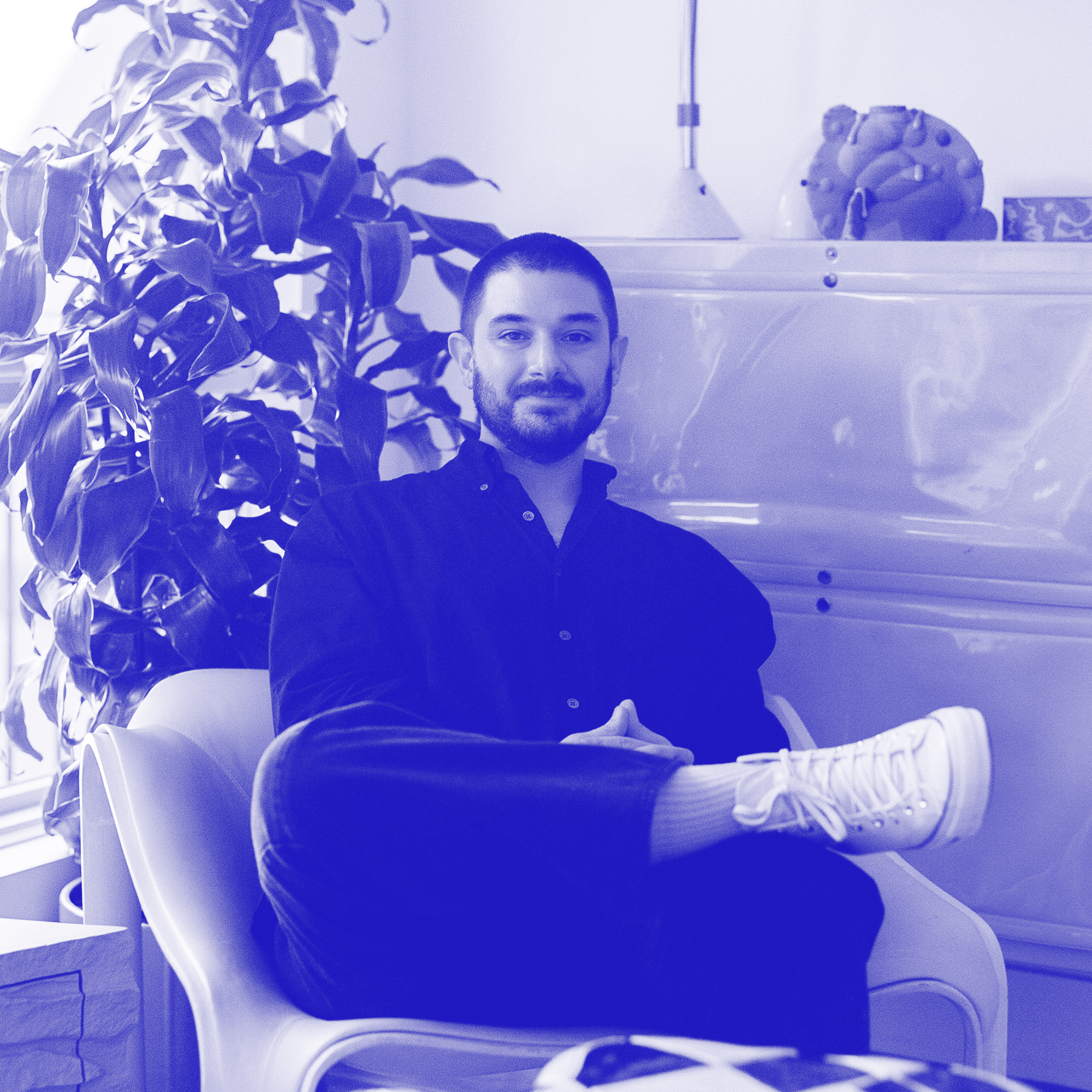
CONVERSATION
January 30th, 2022
By David Eardley
Portrait: Duotone version of photo by Sean Davidson
︎It’s fascinating to look back over the past five years, during which time the design community has radically shifted to a more youthful, energetic, and progressively-minded orientation. Brooklyn-based curator and founder of the gallery and furniture + design platform Superhouse, Stephen Markos (one of our long-time mutuals), has a unique and forward-thinking vision for the design community. This has been brought to life over the past year in his digital-turned-physical space, Superhouse Vitrine, as well as a strong online presence that belies an astute understanding of the future of design. Stephen and I met the other day to chat about walking the line—digital vs. physical, or digital + physical?
Future Homes with Superhouse Founder Stephen Markos
January 30th, 2022
By David Eardley
Portrait: Duotone version of photo by Sean Davidson
︎It’s fascinating to look back over the past five years, during which time the design community has radically shifted to a more youthful, energetic, and progressively-minded orientation. Brooklyn-based curator and founder of the gallery and furniture + design platform Superhouse, Stephen Markos (one of our long-time mutuals), has a unique and forward-thinking vision for the design community. This has been brought to life over the past year in his digital-turned-physical space, Superhouse Vitrine, as well as a strong online presence that belies an astute understanding of the future of design. Stephen and I met the other day to chat about walking the line—digital vs. physical, or digital + physical?
So for this interview, I wanted to move beyond talking about the Vitrine space, since I know you’ve been speaking a lot about it. Not to steer clear, but rather just zoom out a bit. As we're going into the new year, where do you see design going? As someone who works in a similar brain space as me, what are the most interesting things you’re seeing on the internet?
Already just a couple, couple weeks in! Let me think.
Even something lighthearted….
I love physical work, but there are some digital projects that I think still continue to surprise me. I’ve been wondering what will be the future of digital exhibitions, now that we’re getting used to living with Covid. There's something that I saw a bit ago that I thought was really cool: it’s this show called “Emergence and Existence of Arbitrariness.” It's essentially a digital show where you can explore the work in a virtual space. I believe all the artworks are NFTs.
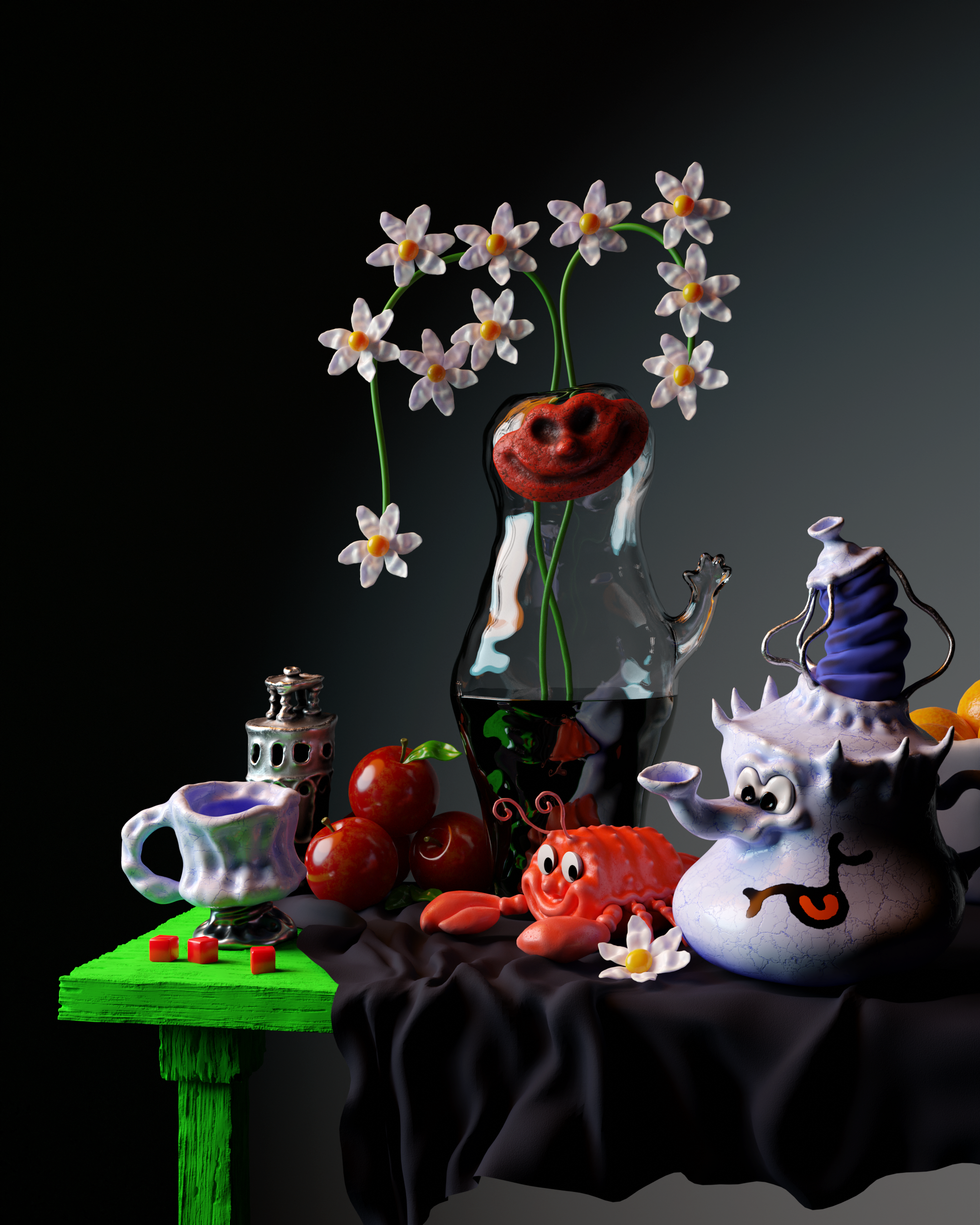
Still Friends - An NFT by Sébastien Rabaste
You bring up NFTs, which is sort of the buzzword going into 2022, at least in the art and design worlds. It brings up a lot of mixed feelings for me, though I think overall it’s really interesting. I would love to hear your thoughts on what you see going right with these kinds of digital exhibitions at the moment, and what obstacles you see popping up and holding them back.
Well, I think that a lot of people share mixed feelings about NFTs. But NFTs provide a valuable resource for many individuals: for designers themselves who either have the technical skills or can collaborate with someone with those skills, NFTS can give them the opportunity to reach a new market and another outlet to sell their work.
It’s also an interesting collector's market, in a way. In the metaverse, you can have access to beautiful, high quality objects—what many of us already enjoy in the physical world. So there's a lot of opportunity there too. But it is going to take a while for people to adjust to it. The more and more people treat displaying digital work like art and give it lots of care, the more respect it will have.
A really good point. With any sort of emerging digital experience or digital platform, it requires time for people to acclimate and take it seriously. Think about how long it took for people to take Instagram seriously as a method of doing business.
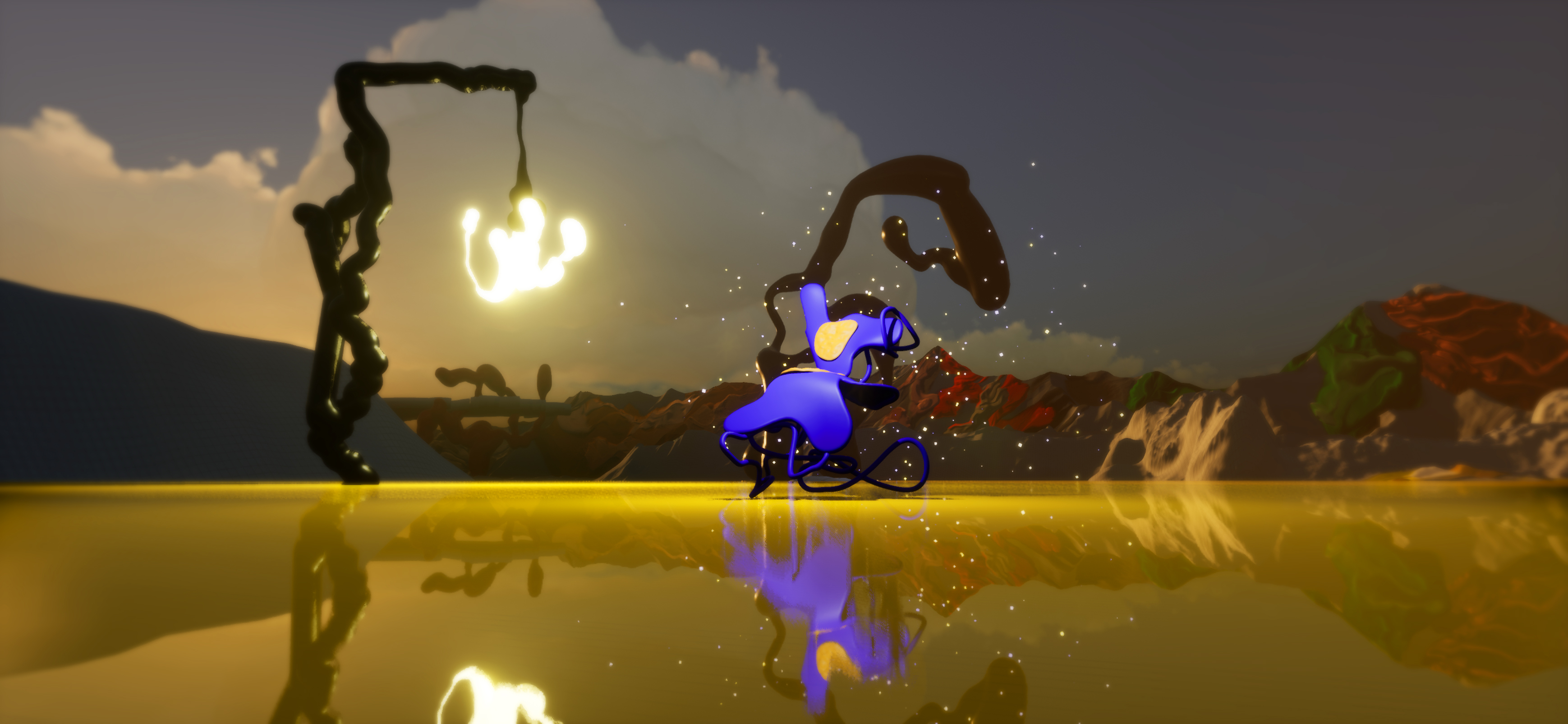
A still from Memory Foam, a virtual exhibition of work by OrtaMiklos from Superhouse and Friedman Benda (Credit: Guillaume Roux)
I think you make a good point about NFTs, because one of the characteristics of the design world that often frustrates me is the inaccessibility of it, both from a maker’s perspective and a consumer’s perspective. There's something really neat about NFTs because of the way they make these worlds more accessible to people. It offers a kind of democratized way of consuming high end design.
One thing I do think about is the obstacle of accessibility, from a visual standpoint. I’ve explored some digital exhibitions - there will be these beautiful works, but then the portal or interface is so clunky that the joy gets sucked out of it.
Yeah. I think people who are putting these exhibitions on need to think about the user experience, for sure. Again, that goes back to the care, in terms of putting it on: understanding that your show is being viewed through a computer or your phone. You also need to think about the accessibility for people who have different needs in terms of how they view a digital interface, who maybe use a different method of navigating their mobile device or computer. If we’re going to keep pushing these online exhibitions, we’ve got to consider it more carefully.
It's very strange and cool to be witnessing the rapidly shifting face of something, when we feel like we've mastered so much in the internet space. Do you feel like you are noticing any connection between this changing digital world of design and like the actual physical styles of the work designers are making?
That's a good question. Personally I am not so interested in trends and, because of this, I choose work that really cuts through trends. I still feel strongly that everything in Superhouse shows should be functional in some capacity. When artists make work that’s a bit of a combination of the digital and the physical, something interesting happens. Maybe it’s 3D modeling that then turns into a work that a CNC router makes, or a 3d printed design, or a pattern digitally printed on a sheet of aluminum. It does seem like, since we’re always online, a lot of physical work is bringing in these digital elements or nods to digital interfaces.
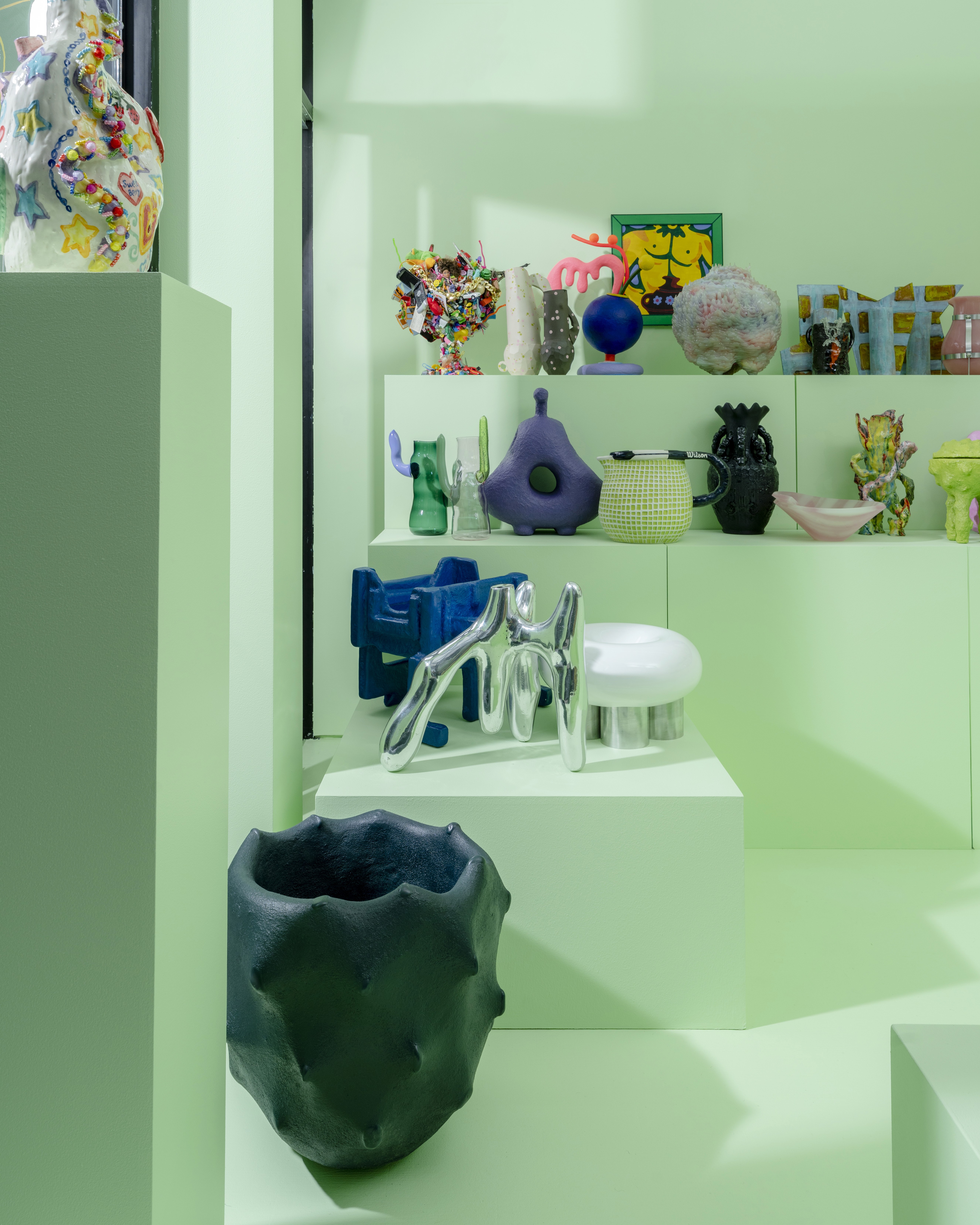
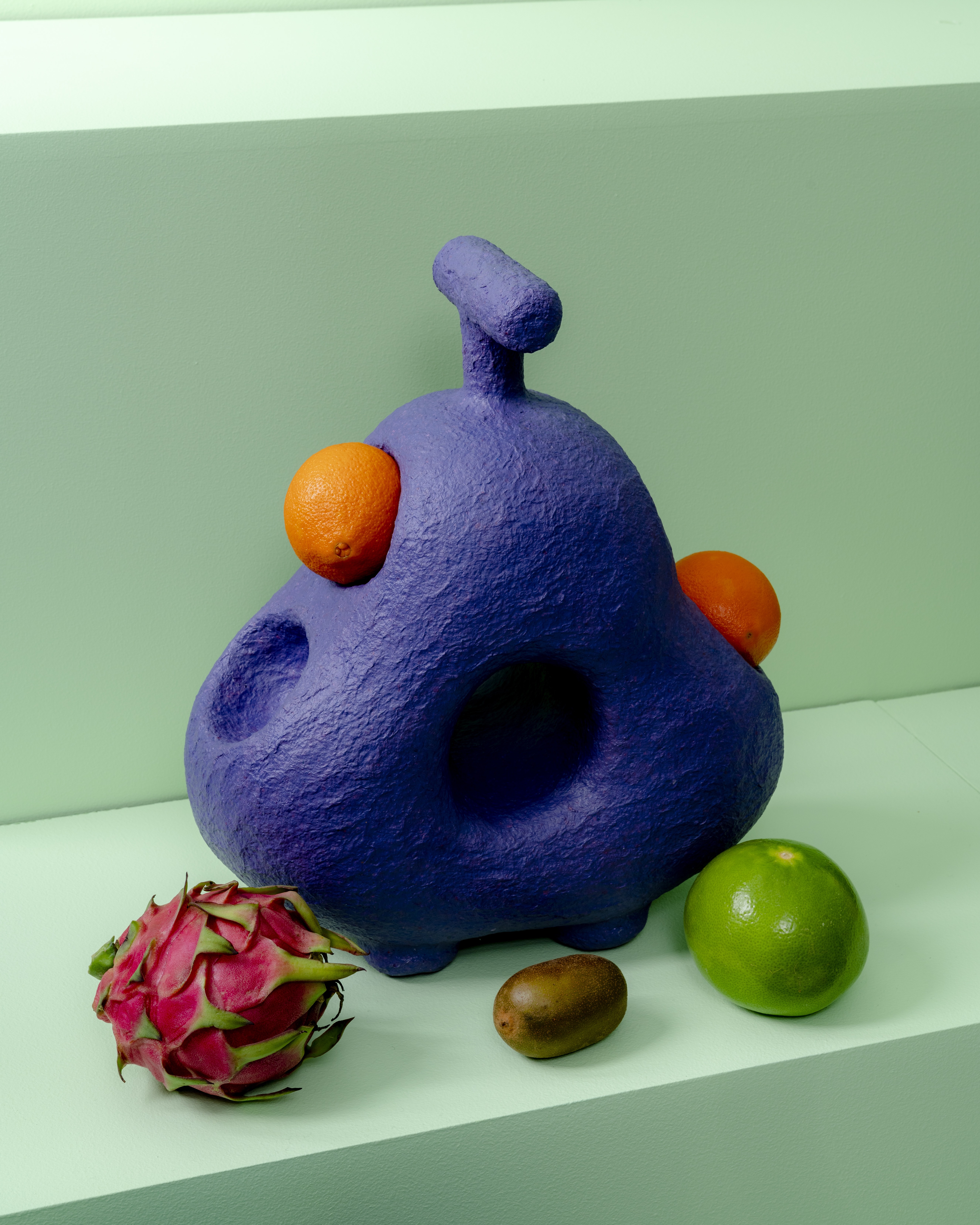
Selections from Supergroup 2 exhibition at Superhouse Vitrine (Credit: Sean Davidson)
I’ve been really preoccupied with Y2K-era tech lately—where everything had a singular purpose.
Yeah, it was all pre-internet and a bit more naive and fun. Some of the work I’m most excited about references that time period: charms and glitter and beads and hearts and smiley faces. I think it’s just so joyful and refreshing—it almost counteracts that influence from the digital world.
There’s something so silly and wonderful about it all.
What’s next for Superhouse—online, offline, and more?
I want to just keep building on the momentum that I've been trying to grow for the past couple years: continuing to show work in the digital and physical space. I want to expand people’s notion of what Superhouse is by bringing in more historical work, not only contemporary artists and designers. I do want to keep supporting the artists and designers that I work with and finding opportunities for them, and that might mean digital opportunities or other physical opportunities. I’m continually finding ways to mix the digital and the physical, and to make it all part of the brand DNA of what Superhouse is.︎
You can explore more of Stephen’s work with Superhouse at @super__house and superhouse.us.

